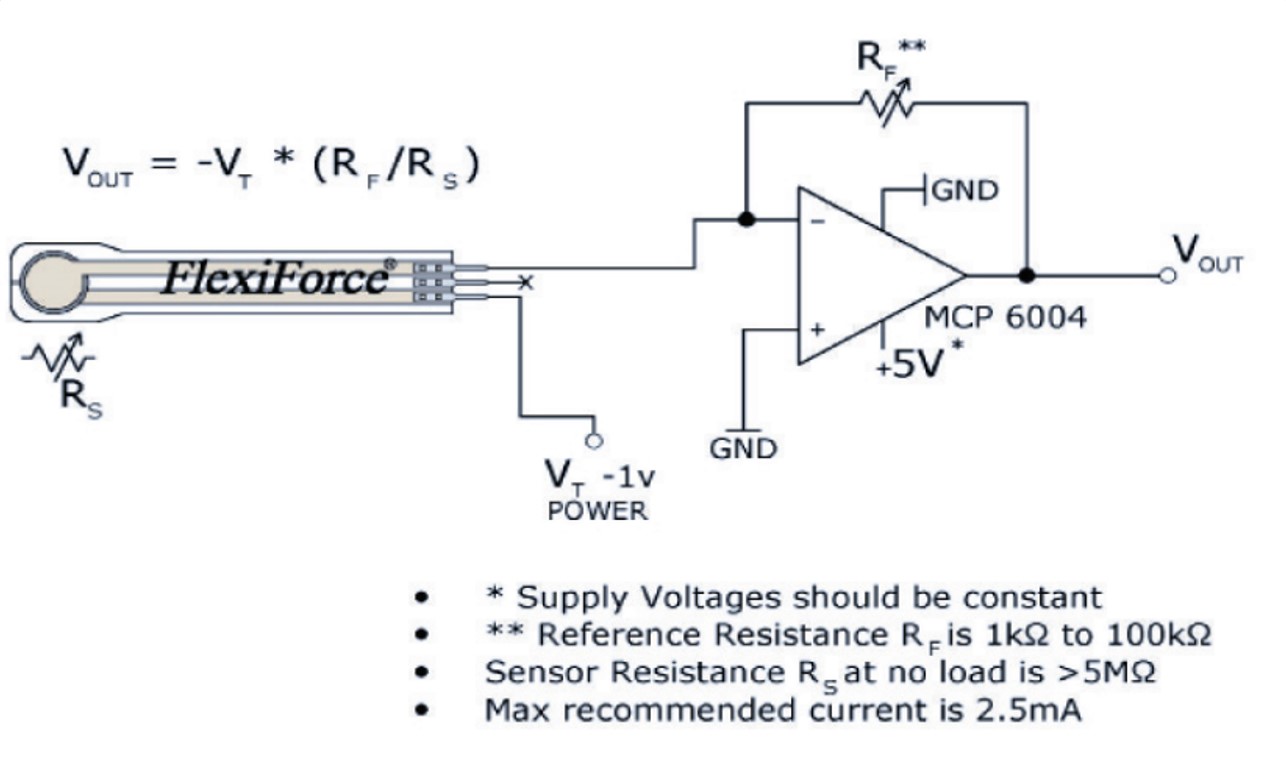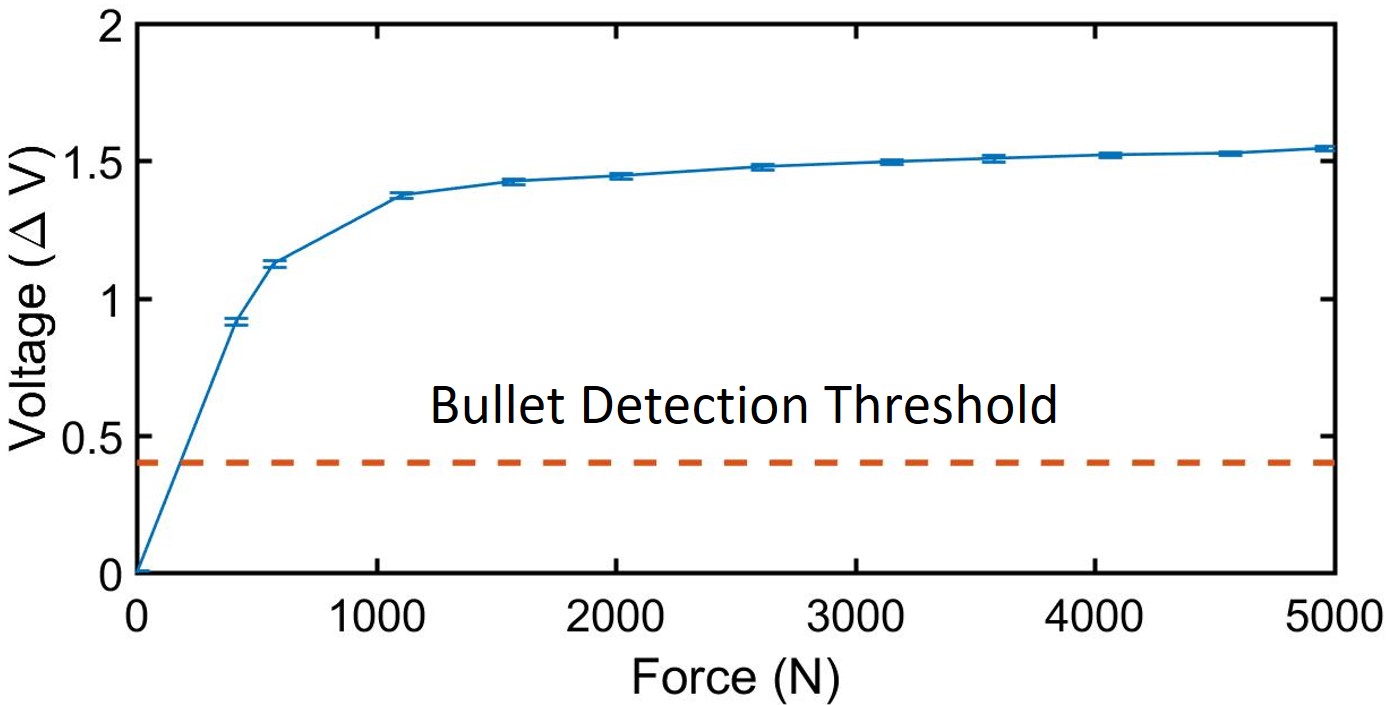Piezoresistive Force Sensor
Description:
The FlexiForce A201 was used to detect large forces associated with either blunt forces or bullets. A 100 lb force range sensor was chosen, roughly equal to 445 Newtons. The standard processing circuit provided in the datasheet was used, as seen below. The bottom rail used 3.3V instead of 5V, and the feedback resistor chosen was 22 Ω. 
The piezoresistive force sensor contains a layer of pressure resistive polymer sealed between two conductive layers. The sensor is used to determine incoming forces to the vest.
Updates:
April 7
Force Press testing of the sensor was conducted using a high and lower power op amp. The high power op amp was chosen for usage in this application using the specifications specified in the description. Thresholding based on lab testing suggested that 0.4 V difference from baseline, corresponding to approximately 125N of force, would serve as an appropriate threshold for detection of bullets.

March 31
We successfully integrated the piezoelectric sensor into our pouch. When we took the pouch to a gun range, attached it to a ballistic vest, and shot the vest, we saw a jump in signal detection from the sensor. This indicates we have a functional bullet detection sensor for our system. Initial testing was also done with three sensors embedded into the vest. Concurrent measurement of signal from each sensor and variations in these signals demonstrated that only one sensor placed centrally in the vest body could detect the force associated with a bullet. A close-up of the sensor is shown below as well.

©2025 Vanderbilt University ·
Site Development: University Web Communications